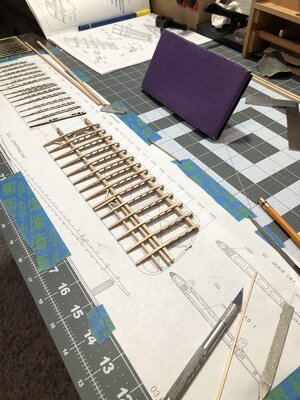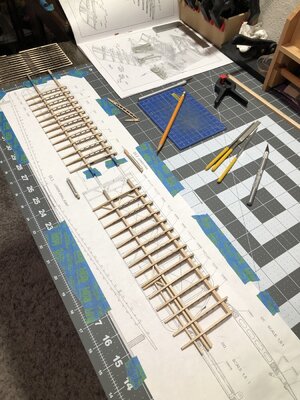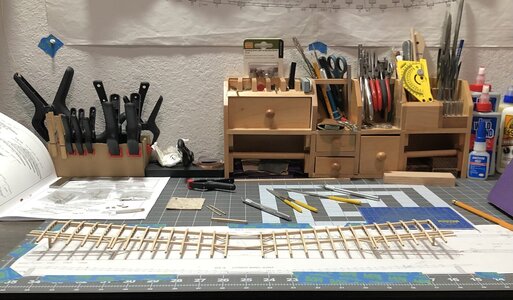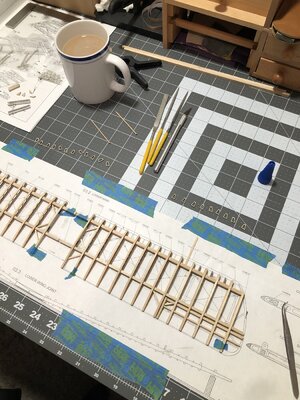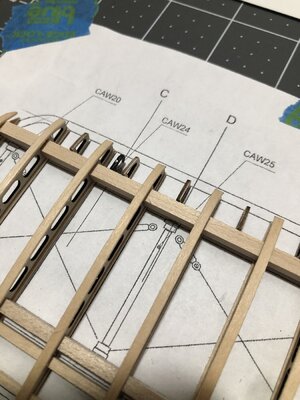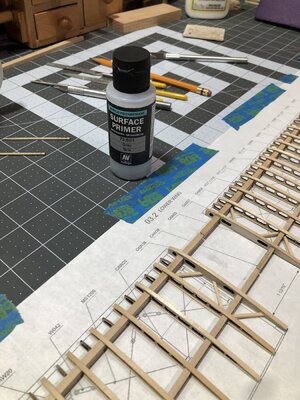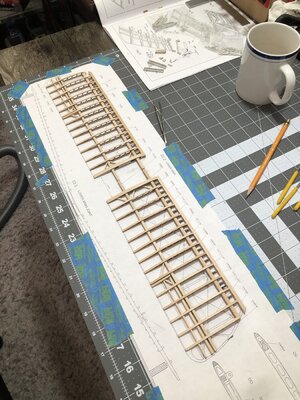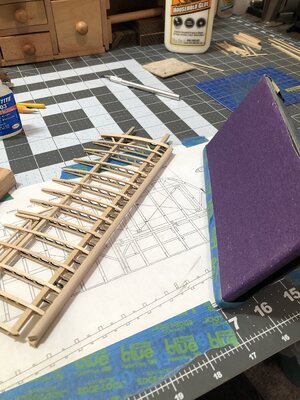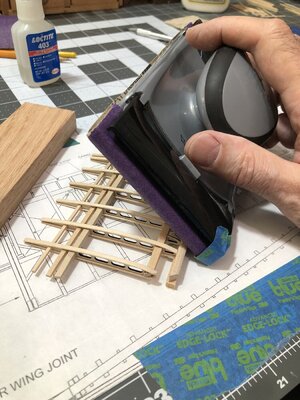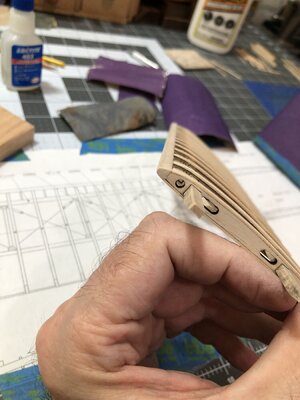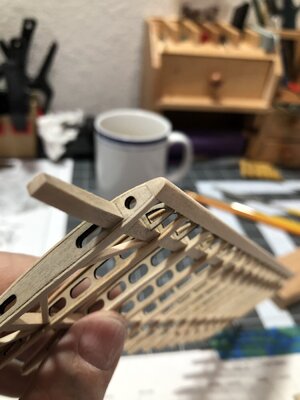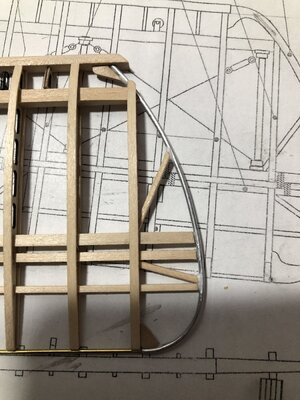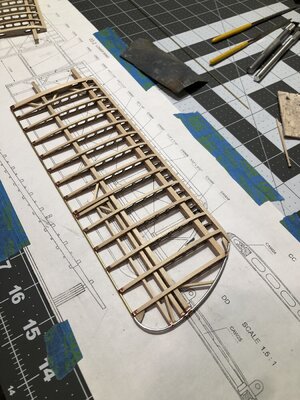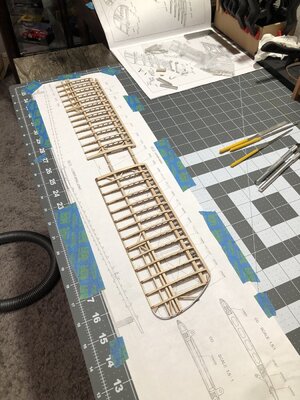Today I added the small ribs to the large spar, after sanding the char off the edges, and sanding both faces to get the lazer burn off of them.
View attachment 294774
Next was the control line pulleys. After filing them and painting them, I drilled holes for them in the large spar and glued them in place. You would not have room after the leading edge goes on. Not to mention you couldn’t drill a hole either.
 View attachment 294775
View attachment 294775
I should mention the metal casting should have primer painted on first, so the paint adheres properly. I use Vallejo surface primer.
View attachment 294776
Next the leading edges were glued on after sanding the front of the wing to ensure it was flat across the entire length. Then the ends were trimmed in preparation for sanding the profile.
View attachment 294786
Next sanding the profile on the leading edge was done… as mentioned before, I make sure one side of my sanding block is taped so I can slide it on the work surface while holding the wings flat. I change the angle of the block as I progress. This ensures a constant profile along the edge.
View attachment 294779View attachment 294780
Leading edge done on the right lower wing…
View attachment 294781View attachment 294782
Then the left lower wing was sanded…
View attachment 294783
Nothing more satisfying than having the leading edge profiles completed! A lot of sanding!
Then I sanded both wings with 600 grit sandpaper.
View attachment 294785
At this stage, next I will be fabricating the wings tips and adding the trailing edges and straps. Then I can add clear with stain.
See you next time.





